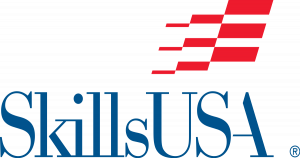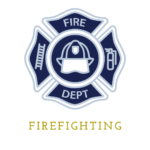
Under Development
Fire Science Pathway
National Firefighting Pathway Specialist
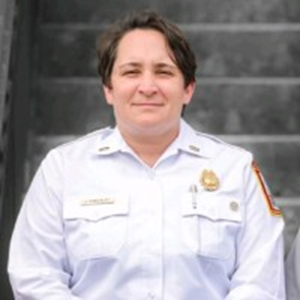 Jenn Gonzelez
Jenn Gonzelez
Jenn works at the Alabama Fire College. Reach out for support or questions. She is a phenomenal resource!
Click Here for her LinkedIn
Email: ps@lapsen.org
Recommended Fire Science (FS) Pathway
The courses below are recommended by our Board and network of industry experts.
Each course link will lead to a page with lesson plans, national standards, and resources.
For more information, feel free to email info@laspen.org
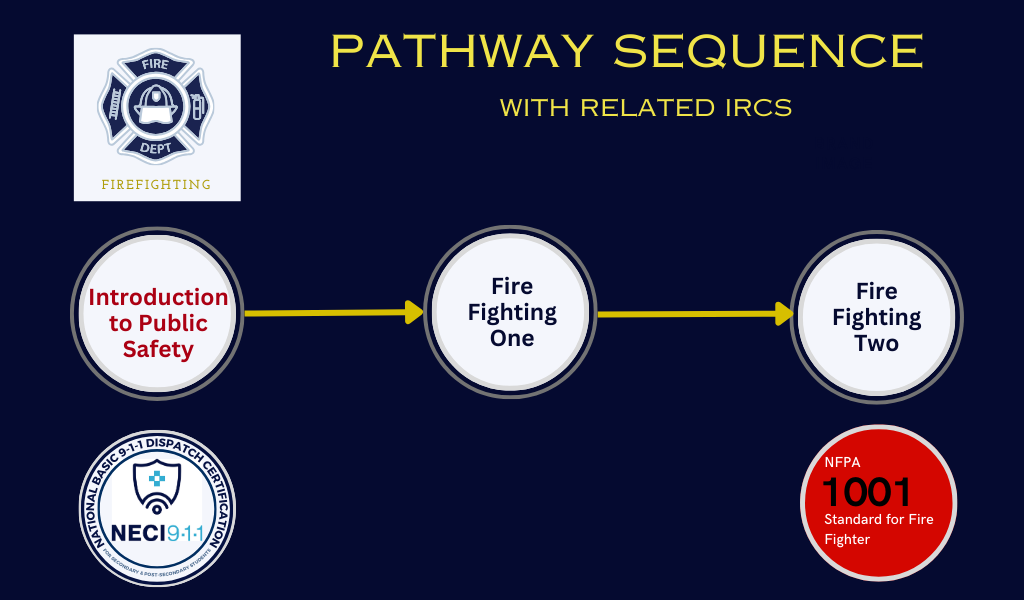
This is a national exemplar. Each state makes decisions on how to best serve their industry and school programs. Always refer to state and local guidelines for implementation.
Public Safety Pathway – an alternative
A broad based public safety pathway is an option. This pathway has some EMS and some Fire. To learn more – Click Here.
Introduction Course (option 1) – Introduction to Public Safety Service (IPSS)
Being designed
Introduction Course (option 2) – Introduction to Law and Public Safety (ILPS)
It is recommended that an EMS pathway begin with a broad based introduction to the law and public safety system. EMS professionals are a key part of the larger law and public safety system, so a critical starting point for the pathway is an exploration of the larger ecosystem the EMS lives in. Additionally, it is advised that a high school pathway in EMS not become so specific to EMS exclusively that participants are not exposed to other elements in LPS. The broader approach helps with marketing to encourage students to enroll.
Visit our Introduction to Law and Public Safety course page – with lesson plans – Click Here
F1 is marketable and industry is demanding broad public safety skills for career candidates. This course aims to provide students with fundamental knowledge and skills essential for entry-level positions in firefighting and related emergency services. Participants will learn about fire prevention, basic firefighting techniques, equipment operation, and emergency response procedures.
Visit our Firefighting 1 course page – Click Here
Core Course – Firefighting 2 (F2)
Under Development
F2 completes the training to prepare students for a career in fire services. This course aims to provide students with fundamental knowledge and skills essential for entry-level positions in firefighting and related emergency services. Participants will learn about fire prevention, basic firefighting techniques, equipment operation, and emergency response procedures.
Visit our Firefighting 2 course page – Click Here (coming soon)
Advanced Course Options
LAPSEN recommends pathways have flexibility for local systems to adjust to local needs. It is also recommended that a “deeper dive” into DC -related content come from dual enrollment opportunities, if possible. The DC course covers secondary educational needs adequately. To maximize student career preparation, engagement, and marketing it is suggested to offer courses similar to those listed below to complete the pathway.
Option 1 – Emergency Medical Services 1 (EMS1)
Emergency Medical Services 1 (EMS1)prepares students to work in a fast-growing career field in LPS. Once students complete this course they will be fully prepared for entry-level work in the field. The course is designed for high school students as part of the Career and Technical Education (CTE) program. This course aims to provide students with fundamental knowledge and skills essential for entry-level positions in emergency medical services. Participants will learn about basic anatomy, medical assessment, emergency response procedures, and patient care. It is recommended students test for Emergency Medical Responder (EMR) at the end of the course.
Visit our Emergency Medical Services 1 course page – Click Here
Option 2 – Drones for Law and Public Safety (DLPS)
Bring some excitement to your pathway! This course prepares students for certifications to operate drones in the law and public safety environment. Drones are increasingly used in DC areas. First, students will complete the necessary training to be prepared to pass the FAA 107 Pilot test. Students will then train in remote sensing and photogrammetry. Students will learn how to prepare and plan for law and public safety drone operations. A significant portion of the course time will be dedicated to developing flight skills and performing maneuvers necessary for such operations. Using the National Institute of Standards and Technology national standard performance test for unmanned aerial vehicles, students will train for real world applications.
Visit our Drones for Law and Public Safety course page – Click Here
Other Options
There are many options that local systems can review that may fit more appropriately.
Visit our overall course page – Click Here
Industry Recognized Credential (IRC) for the Fire Pathway
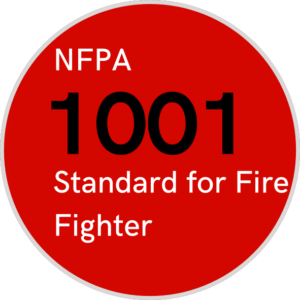 Fire Fighter 1001
Fire Fighter 1001
The Firefighter I certification is a foundational credential for entry-level firefighters, focusing on the basic skills and knowledge necessary for firefighting. It typically covers areas such as fire suppression, search and rescue, hazardous materials awareness, and the use of firefighting equipment. The certification aims to ensure that firefighters are competent in the essential duties required to respond to emergencies safely and effectively.
To learn more – Click Here
 Emergency Medical Responder (EMR)
Emergency Medical Responder (EMR)
Emergency Medical Responders provide immediate lifesaving care to critical patients who access the emergency medical services system. EMRs have the knowledge and skills necessary to provide immediate lifesaving interventions while awaiting additional EMS resources to arrive. EMRs also provide assistance to higher-level personnel at the scene of emergencies and during transport. Emergency Medical Responders are a vital part of the comprehensive EMS response.
To learn more – Click Here
 Training
Training
Instructors in the LS pathway need to have industry experience or training. If you have a specific training need email info@lapsen.org
Click Here to go to our Training Schedule
 Xplorlabs
Xplorlabs
Xplorlabs is its free, STEM-focused educational program designed to inspire students through problem-based, real-world investigations in safety and sustainability. They have several fire related lessons and resources.
Click Here to access these.
Competitions
The EMS pathway national CTSO is SkillsUSA. There is an EMT and First Aid/CPR competition. There are also several competitions that students can choose from to participate in that support the EMS pathway content.
For more information visit www.skillsusa.org/competitions or reach out to info@lapsen.org
Firefighting
Basic fire skills for a single competitor. A student demonstrates basic firefighting skills such as hose operation, search and rescue, knots, and equipment demonstrations. There is also a written exam.
First Aid - CPR
Basic DC skill for a single competitor. Evaluates a competitor’s ability to perform procedures or take appropriate action based on scenarios presented related to CPR first aid medical emergencies. There is also a written exam.
EMT
Student teams of two demonstrate knowledge and skills necessary to be EMTs. There is a knowledge test and several skill demonstrations plus emergency medical scenarios.
Commercial sUAS Drone
This competition for a team of 2 is designed to evaluate team members’ skills in the safe and efficient use of drone technology
Customer Service
The competition evaluates students’ proficiency in providing customer service. This is one of the highest valued skills sets sought by DC employers.
Career Pathways - Human Services
Student teams use their course of study as the basis of a project that will benefit their class, school, community or industry.
Job Skill Demonstration - 3 Contests
Competitors demonstrate and explain an entry-level skill used in the occupational area for which they are training. “A” refers to skills taught in the pathway. “Open” is usually a skill learned in WBL or similar that is outside the pathway. “Action Skills” is for students with IEPs. In all cases, the skill should be hands on as it is a “demonstration.”
Robotics - Urban Search and Rescue
A student team designs and operates a robot that simulate equipment used in rescue operations.
There are dozens more that cover everything from speeches to specifc skill sets.
 Career Posters
Career Posters
Click Here to go to download folder
 Student Recognition
Student Recognition
Your students can be members of the National Technical Honors Society PLUS a special endorsement for achievement in law and public safety! Don’t have an NTHS – they are super easy to start and no extra work.
Click Here to learn more.
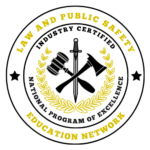 Programs of Excellence
Programs of Excellence
The national Industry Credentialed Program of Excellence (ICPE) is designed to make the best better. Applicant programs must demonstrate competencies across several standards. LAPSEN specialists assist applicant programs throughout the process with training, guides and mentorship.
Click Here to learn more. Do YOU have the BEST program?
National Program Directory
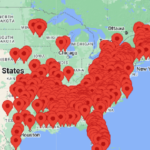 The National Census of Youth Law Enforcement Programs was funded by the DOJ COPS grant program.
The National Census of Youth Law Enforcement Programs was funded by the DOJ COPS grant program.
Search the directory for programs near you – Click Here
Is your program is in the directory? If not: Click Here
Links
E-Fire Academy – Tons of stuff, plus training pages. Helped me in my first year of Fire! Click Here
International Fire Service Training Association (IFSTA) – Textbook is great. Support materials are solid. Click Here
Applications of Firefighting Lesson Plans – From Georgia around 2014. Complete lessons: Click Here
